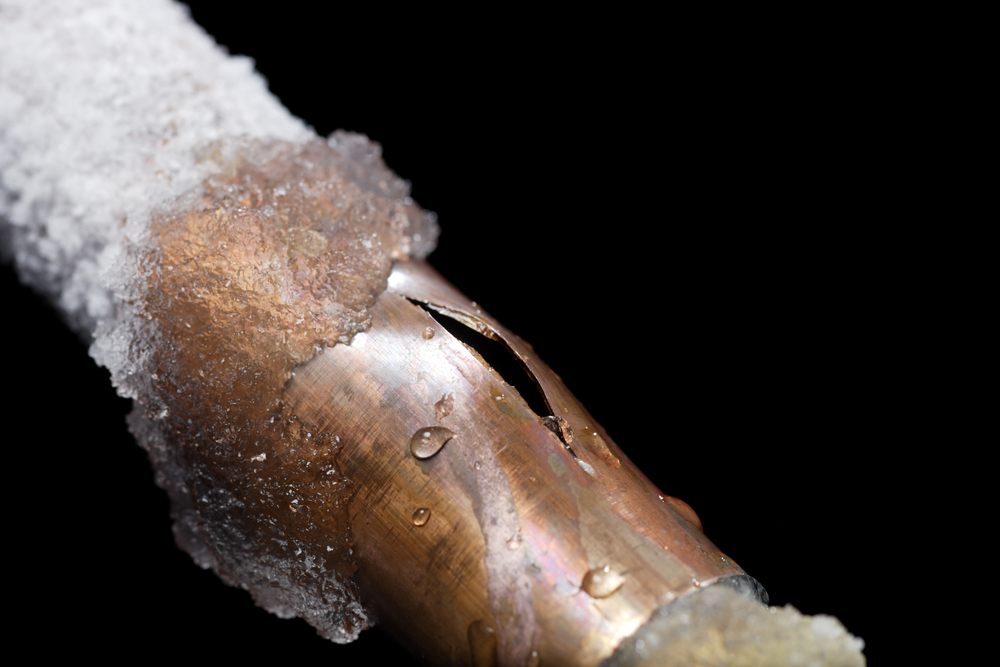Ways to Defend Your Pipes from Cold Weather: Professional Tips
Ways to Defend Your Pipes from Cold Weather: Professional Tips
Blog Article
Do you find yourself in search of resources concerning Prevent Frozen Pipes ?
:strip_icc()/snow-outdoor-faucet-pipes-4af65d1e5e904fb1aa7bf74071fe5d89.jpg)
Winter can ruin your pipes, especially by freezing pipelines. Here's just how to prevent it from happening and what to do if it does.
Intro
As temperatures decrease, the risk of frozen pipelines boosts, possibly resulting in pricey repairs and water damage. Recognizing just how to stop icy pipelines is essential for home owners in chilly environments.
Prevention Tips
Shielding at risk pipelines
Cover pipelines in insulation sleeves or make use of warmth tape to protect them from freezing temperatures. Focus on pipelines in unheated or exterior locations of the home.
Home heating techniques
Maintain interior rooms adequately heated up, especially locations with plumbing. Open closet doors to enable cozy air to circulate around pipelines under sinks.
How to determine icy pipes
Try to find lowered water flow from faucets, uncommon smells or noises from pipes, and noticeable frost on revealed pipelines.
Long-Term Solutions
Structural modifications
Think about rerouting pipelines far from outside wall surfaces or unheated areas. Add extra insulation to attics, basements, and crawl spaces.
Upgrading insulation
Invest in premium insulation for pipelines, attics, and walls. Appropriate insulation aids preserve regular temperatures and lowers the risk of icy pipelines.
Safeguarding Outside Pipes
Garden pipes and exterior faucets
Detach and drain pipes yard hoses before wintertime. Mount frost-proof faucets or cover outside taps with protected caps.
Understanding Icy Pipelines
What causes pipelines to ice up?
Pipes freeze when subjected to temperatures listed below 32 ° F (0 ° C) for prolonged durations. As water inside the pipes freezes, it increases, putting pressure on the pipeline walls and possibly causing them to rupture.
Threats and damages
Frozen pipelines can lead to water system disruptions, building damage, and expensive repair services. Ruptured pipelines can flood homes and cause extensive architectural damages.
Indications of Frozen Pipeline
Identifying icy pipelines early can avoid them from breaking.
What to Do If Your Pipes Freeze
Immediate actions to take
If you believe frozen pipes, maintain faucets open to soothe pressure as the ice thaws. Utilize a hairdryer or towels soaked in warm water to thaw pipes gradually.
Conclusion
Protecting against frozen pipes needs aggressive steps and fast feedbacks. By understanding the causes, indications, and safety nets, homeowners can safeguard their pipes throughout cold weather.
5 Ways to Prevent Frozen Pipes
Drain Outdoor Faucets and Disconnect Hoses
First, close the shut-off valve that controls the flow of water in the pipe to your outdoor faucet. Then, head outside to disconnect and drain your hose and open the outdoor faucet to allow the water to completely drain out of the line. Turn off the faucet when done. Finally, head back to the shut-off valve and drain the remaining water inside the pipe into a bucket or container. Additionally, if you have a home irrigation system, you should consider hiring an expert to clear the system of water each year.
Insulate Pipes
One of the best and most cost-effective methods for preventing frozen water pipes is to wrap your pipes with insulation. This is especially important for areas in your home that aren’t exposed to heat, such as an attic. We suggest using foam sleeves, which can typically be found at your local hardware store.
Keep Heat Running at 65
Your pipes are located inside your walls, and the temperature there is much colder than the rest of the house. To prevent your pipes from freezing, The Insurance Information Institute suggests that you keep your home heated to at least 65 degrees, even when traveling. You may want to invest in smart devices that can keep an eye on the temperature in your home while you’re away.
Leave Water Dripping
Moving water — even a small trickle — can prevent ice from forming inside your pipes. When freezing temps are imminent, start a drip of water from all faucets that serve exposed pipes. Leaving a few faucets running will also help relieve pressure inside the pipes and help prevent a rupture if the water inside freezes.
Open Cupboard Doors
Warm your kitchen and bathroom pipes by opening cupboards and vanities. You should also leave your interior doors ajar to help warm air circulate evenly throughout your home.

I hope you enjoyed our topic about Prevent Frozen Pipes . Thanks a ton for spending some time to browse our post. Do you know anybody else who is inquisitive about Helpful Tips to Prevent Frozen Pipes this Winter? Feel free to share it. Many thanks for being here. Revisit us soon.
Find Out More Report this page